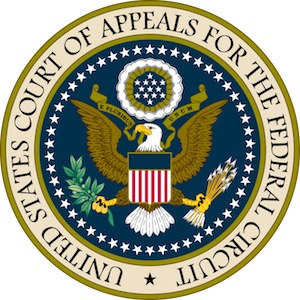 Last month the U.S. Court of Appeals for the Federal Circuit issued its decision in Aatrix Software, Inc., v. Green Shades Software, Inc., No. 2017-1452 (Fed. Cir. February 14, 2018). Issued on Valentine’s Day, the Aatrix opinion is a love letter to American innovation. It held that factual questions precluded dismissal of the complaint on patent eligibility grounds.
Last month the U.S. Court of Appeals for the Federal Circuit issued its decision in Aatrix Software, Inc., v. Green Shades Software, Inc., No. 2017-1452 (Fed. Cir. February 14, 2018). Issued on Valentine’s Day, the Aatrix opinion is a love letter to American innovation. It held that factual questions precluded dismissal of the complaint on patent eligibility grounds.
Many commentators have noted the effect of Aatrix on motions to dismiss and motions for summary judgment in general. But some have overlooked another impact of Aatrix: it permits a patentee to rely on evidence or allegations outside the patent itself.
For example, the Aatrix court credited the complaint’s allegations that the claimed invention “reduces the risk of ‘thrashing,’ a condition which slowed down prior art systems.” (slip op. at 10). [Wikipedia defines thrashing as a condition where “a computer’s virtual memory subsystem is in a constant state of paging, rapidly exchanging data in memory for data on disk, to the exclusion of most application-level processing.”] The patent makes no mention of this prior art problem. Nonetheless, this extrinsic information contributed to the majority’s decision not to hold the invention was conventional or routine.
The Aatrix majority noted the patentee submitted declarations discussing the claimed inventions, and seemingly faulted the district court for not considering the declarations. Slip op. at 3-4. The dissent listed many other things that were considered by the majority but did not appear in the patent itself (dissent at 3-4, fn. 3):
diagrams spelling out the technology of the Aatrix
Patents; the prosecution history of the patents with the
relevant USPTO file wrappers attached as exhibits; a
large number of prior art and patentably distinct means
and methods of creating, displaying and filling out forms
on computers, such as Aatrix’s own “monolithic software;”
hundreds of search results by the USPTO disclosing prior
art in the field; eleven patents or publications disclosing
prior art and/or patentably distinct means and methods
cited by the USPTO in the prosecution of the applications
for the Aatrix’s patents; several products for creating,
designing and filling out forms, allegedly distinct from
Aatrix’s patents, on sale before the date of invention;
alternate methods for creating, displaying and filling out
forms such as Superforms and the use of SDK’s to launch
monolithic software; and the allegedly many improvements,
objectives and advantages over the prior art that
the inventions of Aatrix’s patents provide, including
improvements in the functioning of the computer components
of the inventions.
A casual observer may read the Aatrix dissent, or cases cited therein, to say it is improper to consider extrinsic evidence. In particular, the dissent quotes Secured Mail Sols. LLC v. Universal Wilde, Inc., 873 F.3d 905, 912 (Fed. Cir. 2017), which says “[T]his court has determined claims to be patent-ineligible at the motion to dismiss stage based on intrinsic evidence from the specification without need for ‘extraneous fact finding outside the record.’”. But Secured Mail is itself quoting In re TLI Commc’ns LLC Patent Litig., 823 F.3d 607, 613–14 (Fed. Cir. 2016), where the court found it unnecessary to look outside the record because the patent itself admitted so much of the claimed invention employed well-known technology. Neither Secured Mail nor TLI explicitly prohibited a patentee from relying on extrinsic evidence, especially where the specification does not admit the technology is conventional.
Permitting reliance on extrinsic information to support patent eligibility is consistent with another recent software case, Inventor Holdings, LLC, v. Bed Bath & Beyond, Inc., No. 2016-2442 (Fed. Cir. Dec. 8, 2017). The patentee argued its invention required complex programming, but the court in that case noted patentee “did not cite any complex programming in the patent or the record.”) (emphasis added). Slip op. at 8. This implied the patentee could have added extrinsic information to the record in support of eligibility.
The Manual of Patent Examining Procedure (MPEP) has not yet been updated to reflect Aatrix. Currently, section 2106.05(a) says “the specification should be consulted in determining … whether a claimed invention purports to improve computer-functionality or existing technology.” It does not say only the specification can be consulted. Eventually, the MPEP should be updated to acknowledge that a patent applicant can also rely on extrinsic evidence as in Aatrix.

![[IPWatchdog Logo]](https://ipwatchdog.com/wp-content/themes/IPWatchdog%20-%202023/assets/images/temp/logo-small@2x.png)

![[Advertisement]](https://ipwatchdog.com/wp-content/uploads/2024/04/Artificial-Intelligence-2024-REPLAY-sidebar-700x500-corrected.jpg)
![[Advertisement]](https://ipwatchdog.com/wp-content/uploads/2024/04/UnitedLex-May-2-2024-sidebar-700x500-1.jpg)
![[Advertisement]](https://ipwatchdog.com/wp-content/uploads/2024/04/Patent-Litigation-Masters-2024-sidebar-700x500-1.jpg)

![[Advertisement]](https://ipwatchdog.com/wp-content/uploads/2021/12/WEBINAR-336-x-280-px.png)
![[Advertisement]](https://ipwatchdog.com/wp-content/uploads/2021/12/2021-Patent-Practice-on-Demand-recorded-Feb-2021-336-x-280.jpg)
![[Advertisement]](https://ipwatchdog.com/wp-content/uploads/2021/12/Ad-4-The-Invent-Patent-System™.png)






Join the Discussion
3 comments so far.
B
March 18, 2018 06:44 pmCorrection: “That said, Judge Reyna held for patent eligibility in McRO v. Bandai b/c there was no evidence that certain steps WERE routine and conventional.
B
March 18, 2018 06:43 pm“The Manual of Patent Examining Procedure (MPEP) has not yet been updated to reflect Aatrix. Currently, section 2106.05(a) says “the specification should be consulted in determining … whether a claimed invention purports to improve computer-functionality or existing technology.” It does not say only the specification can be consulted.”
The latest revision to the MPEP states:
MPEP 2106(IV)(C)(3)(D)”Establish on the Record a Prima Facie Case” states: “USPTO personnel should review the totality of the evidence (e.g., the specification, claims, relevant prior art) before reaching a conclusion with regard to whether the claimed invention sets forth patent eligible subject matter.”
That said, Judge Reyna held for patent eligibility in McRO v. Bandai b/c there was no evidence that certain steps weren’t routine and conventional.
Anon
March 18, 2018 11:45 amAny reason why Berkheimer was omitted?
http://www.cafc.uscourts.gov/sites/default/files/opinions-orders/17-1437.Opinion.2-6-2018.1.PDF